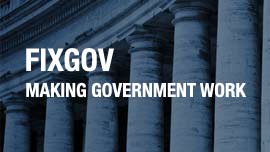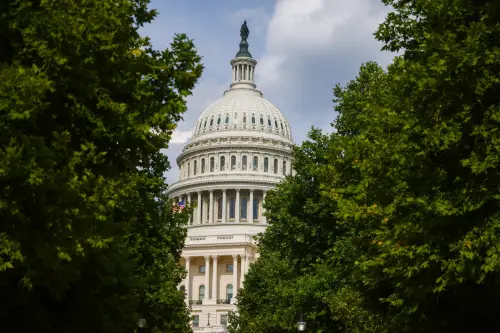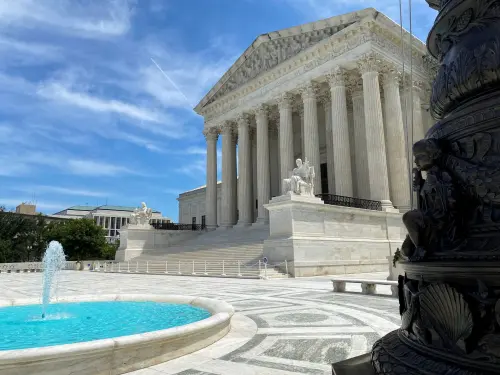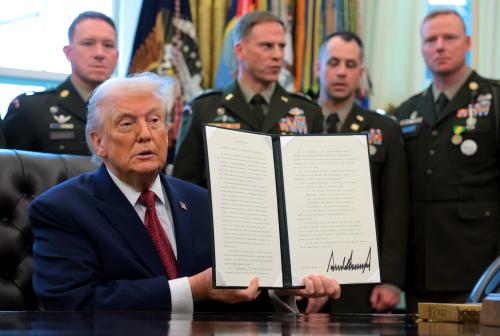On Saturday, June 14, Washington, D.C., will witness its first military parade since 1991. The previous occasion celebrated the United States’ victory in the Gulf War. The event on Saturday will celebrate the army’s 250th anniversary. It also falls on President Trump’s 79th birthday, a coincidence which has drawn the ire of many.
The parade is very unpopular. A recent poll from PRRI shows that three-quarters of Americans oppose it. Counterdemonstrations are planned across the country. Much of the criticism has centered around its potential to evoke the sort of images we are used to seeing in authoritarian regimes around the world, such as Russia, China, North Korea, and Iran. In the past, President Trump has expressed admiration for authoritarian leaders, and his enthusiasm for this parade and desire for a similar event in his first term strike some people as further evidence of his attraction to elements of authoritarianism. However, it is worth noting that President Trump reportedly became inspired to hold such an event after witnessing the Bastille Day parade in France, a long-standing democracy and U.S. ally.
All this begs the question: Why does the U.S. need to throw a military parade?
President Trump sees value in the event. When asked about its costs, estimated to be as high as $45 million, he said, “Peanuts compared to the value of doing it. We have the greatest missiles in the world. We have the greatest submarines in the world. We have the greatest army tanks in the world. We have the greatest weapons in the world. And we’re going to celebrate it.” Similar opinions were expressed by Army Secretary Daniel Driscoll before members of Congress when he said that the parade would lead to a boom in military recruitment. Kori Schake, senior fellow and director of Foreign and Defense Policy Studies at the American Enterprise Institute, echoed the sentiment when she observed that “The strongest correlates to joining the American military are being from a military family or living near a military base. That suggests greater exposure to our military increases the propensity to serve. A big celebration of our Army, with static displays on the Mall after the parade and soldiers to talk with, will help Americans become more familiar with the people who currently serve and may boost recruitment. If you are concerned about recruiting shortfalls or the narrow funnel of intergenerational military service, finding ways to expose more Americans to their military is part of the solution.”
It will undoubtedly be difficult to get an accurate estimate of the number of future servicemen and women whose decision to enlist was directly impacted by the June 14 parade. Still, all this indicates that there can be benefits to such an occasion.
At the heart of this event, however, is a confusing contradiction. Why is a president often defined as an “isolationist” throwing the country’s first military parade in 34 years? For one thing, Trump is not nearly as isolationist as he may seem. Though he often talks about ending forever wars and not getting the country involved in international disputes, he has demonstrated that he has no intention of detaching the U.S. from global affairs. On the contrary, his expressed desire to intervene in the future governance of Gaza, as well as his designs on Greenland and Panama, suggest that he is open to foreign interventions, so long as he interprets them as directly benefiting the welfare of the American people.
As many have noted, Trump’s view of foreign policy is mostly transactional. Rather than defending like-minded liberal democracies, he instead has shown a propensity to push away allies whom he feels might not be carrying their fair share in the arrangement. The same goes for foreign aid; if he sees no “return for the American people” on investment, he will favor cutting such programs.
Another issue is whether or not the American public is in agreement with the president’s foreign policy posturing. Gallup found that in 2025, 43% of those polled felt that the U.S.’s national defense was not strong enough, 40% thought it was about right, and 14% said it was stronger than it needed to be. Regarding the U.S. increasing its involvement in world affairs, the Chicago Council on Foreign Affairs found that a majority of Americans (56%) in 2024 supported the U.S. maintaining an active role. Notably, this number is part of a broader downward shift in U.S. sentiments over the past several decades. Whether this trend will continue is anyone’s guess.
In terms of where Americans believe the U.S.’s foreign policy goals should lie, the overwhelming majority (84%) see combating terrorism as the main aim, followed by preventing the spread of nuclear weapons. Securing supplies for U.S. energy is next at 78%, and promoting favorable trade policies received 67% support. Also high on the list was working with NATO and other allies, which received 65% support. The lowest metrics were helping to build democracies (32%) and promoting economic development (28%) in other countries. While Trump may differ from the American people when it comes to cooperation with NATO, his cuts to foreign aid and disengagement with nation-building show that the president and the American people are of a similar mind on these issues.
The question is not so much whether Trump wants to disengage from the world, but rather whether he is prepared to use American military power to promote America’s interests as he understands them. Thus far, he has used air power for pinprick operations (killing the Iranian general who commanded regional terrorist forces, hitting the Houthis, etc.) but has shied away from deploying ground forces. After Iraq and Afghanistan, many Americans share this aversion. While they don’t favor disengagement from the rest of the world, they are less willing to countenance the extended commitment of U.S. forces abroad than they were two decades ago.
Reaction to this parade will no doubt be as polarized as the country is. There’s nothing wrong with celebrating the 250th anniversary of the U.S. Army, but the spotlight of this debate is on the president, not the military. Additionally, the circumstances within which the march is taking place have evolved. The deployment of Marines to Los Angeles, the spread of demonstrations across the country, and the coinciding national “No Kings” rallies have heightened concerns not only about growing polarization but also about the potential for broader use of military forces domestically. Although the march was intended as a celebration, some may view it as an implicit show of force.
The Brookings Institution is committed to quality, independence, and impact.
We are supported by a diverse array of funders. In line with our values and policies, each Brookings publication represents the sole views of its author(s).









Commentary
Army parade fuels debate over power, politics, and pride
June 12, 2025